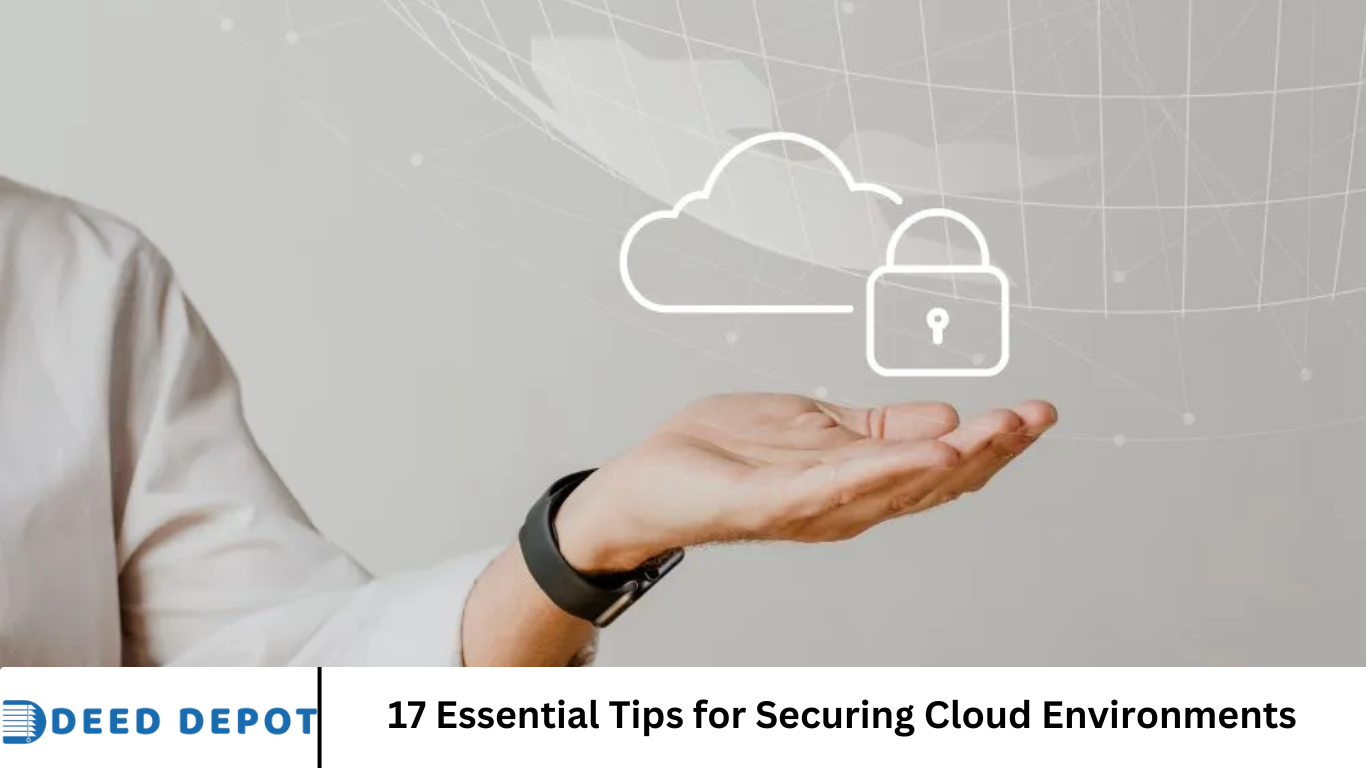As businesses increasingly move their operations to the cloud, securing these environments becomes a top priority. Cloud infrastructure provides flexibility, scalability, and efficiency, but also introduces unique security challenges. In this article, we explore 17 essential tips for securing cloud environments to help you mitigate risks and protect your digital assets.
More Read: 6 Essential GCP Security Best Practices for a Safer Cloud Environment
1. Understand Your Cloud Architecture
Security starts with a deep understanding of your cloud stack. Know the components involved—services, identity and access management, application edge, load balancer, compute, and storage. Each layer introduces its own vulnerabilities, so map your infrastructure thoroughly.
2. Choose the Right Cloud Provider
Not all cloud providers offer the same level of security. Evaluate providers based on compliance standards, shared responsibility models, and security services offered. Look for certifications such as ISO 27001, SOC 2, and GDPR compliance.
3. Implement the Principle of Least Privilege (PoLP)
Limit user permissions to only what is necessary. Apply role-based access control (RBAC) to minimize the risk of insider threats and reduce the blast radius of potential breaches.
4. Use Multi-Factor Authentication (MFA)
Enable MFA across all user accounts to add an extra layer of security. Even if credentials are compromised, MFA can prevent unauthorized access.
5. Encrypt Data at Rest and in Transit
Ensure that sensitive data is encrypted both while stored and during transmission. Use industry-standard encryption protocols and manage encryption keys securely.
6. Regularly Audit and Monitor
Continuous monitoring and auditing help detect anomalies and unauthorized activities in real time. Implement logging and use security information and event management (SIEM) tools for proactive threat detection.
7. Keep Systems and Software Updated
Unpatched systems are a common entry point for attackers. Regularly update operating systems, applications, and third-party components to address known vulnerabilities.
8. Secure APIs
APIs are often targeted by attackers. Secure them with authentication, authorization, and input validation. Use API gateways and implement rate limiting to protect against abuse.
9. Isolate Critical Resources
Segment your cloud environment using virtual private clouds (VPCs), subnets, and security groups. Isolate sensitive workloads to reduce the attack surface.
10. Backup Data Regularly
Regular backups protect against data loss from accidental deletion, corruption, or ransomware. Store backups in separate, secure locations and test recovery procedures.
11. Use Firewalls and Security Groups
Cloud-native firewalls and security groups help control traffic flow to and from your instances. Configure them to allow only necessary traffic and block all else by default.
12. Employ Threat Detection and Response Tools
Use cloud-native or third-party threat detection tools that leverage machine learning and analytics. Automated response mechanisms can help contain threats quickly.
13. Educate and Train Your Team
Human error is a major risk in cloud security. Provide regular training on security best practices, phishing awareness, and incident response procedures.
14. Conduct Penetration Testing
Simulate attacks on your cloud environment to identify and fix weaknesses. Regular penetration testing ensures your defenses evolve alongside threats.
15. Establish a Cloud Governance Framework
Implement policies, procedures, and controls to manage cloud usage securely. A governance framework aligns cloud operations with business and compliance requirements.
16. Manage Third-Party Risks
Vendors and partners can introduce vulnerabilities. Assess the security posture of third-party services and enforce contractual security requirements.
17. Prepare for Incident Response
Have a documented and tested incident response plan tailored for the cloud. Include roles, communication strategies, and post-incident reviews to improve future responses.
Frequently Asked Question
Why is cloud security important for modern businesses?
Cloud security is essential because it protects sensitive data, ensures compliance with regulations, and maintains business continuity. As businesses rely more on cloud infrastructure, the risk of cyberattacks and data breaches increases, making robust security measures critical.
What is the principle of least privilege (PoLP) in cloud environments?
The principle of least privilege (PoLP) means granting users the minimum level of access necessary to perform their tasks. This minimizes potential damage from compromised accounts or insider threats.
How can multi-factor authentication (MFA) enhance cloud security?
MFA adds an extra layer of protection by requiring users to verify their identity using multiple methods, such as a password and a mobile device. This makes unauthorized access significantly more difficult, even if credentials are stolen.
What tools help monitor and audit cloud environments?
Security Information and Event Management (SIEM) tools and native cloud monitoring services (like AWS CloudTrail or Azure Monitor) help detect unauthorized activities, audit user actions, and respond to threats in real time.
How often should cloud backups be performed?
Cloud backups should be performed regularly based on data criticality—daily for essential data and at least weekly for less frequently updated information. Test restoration processes periodically to ensure data integrity and recovery readiness.
What are the best practices for securing cloud APIs?
Secure cloud APIs using strong authentication and authorization, input validation, encryption, and by leveraging API gateways. Rate limiting and logging can further help protect against abuse and attacks.
What should an incident response plan for the cloud include?
A cloud-specific incident response plan should define roles, response procedures, communication strategies, and post-incident review processes. Regular drills and updates ensure the plan remains effective and actionable.
Conclusion
Securing cloud environments requires a proactive, multi-layered approach. By understanding the unique aspects of cloud infrastructure and implementing these 17 essential tips, organizations can strengthen their cloud security posture, ensure compliance, and protect critical data from evolving threats. Prioritize continuous improvement, stay updated with best practices, and make security an integral part of your cloud strategy.


